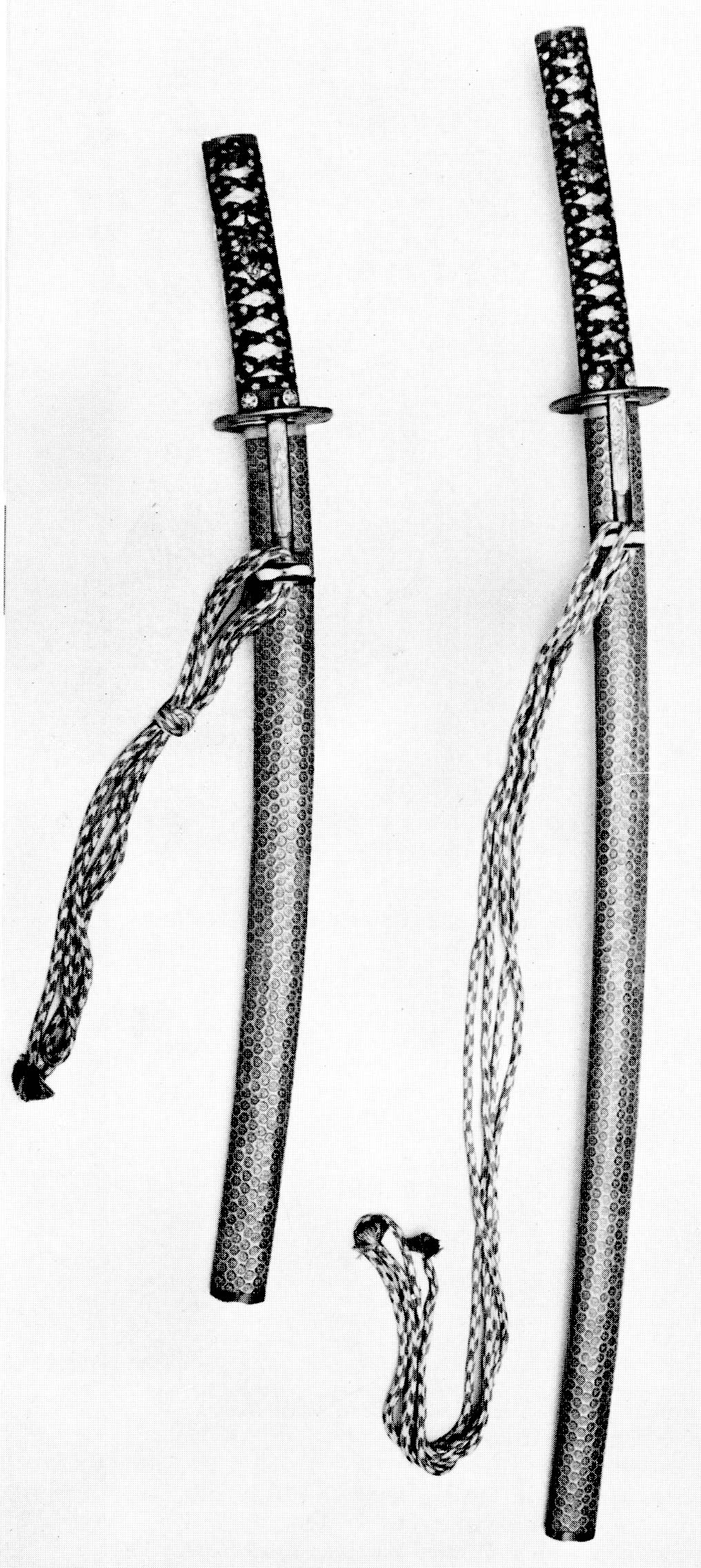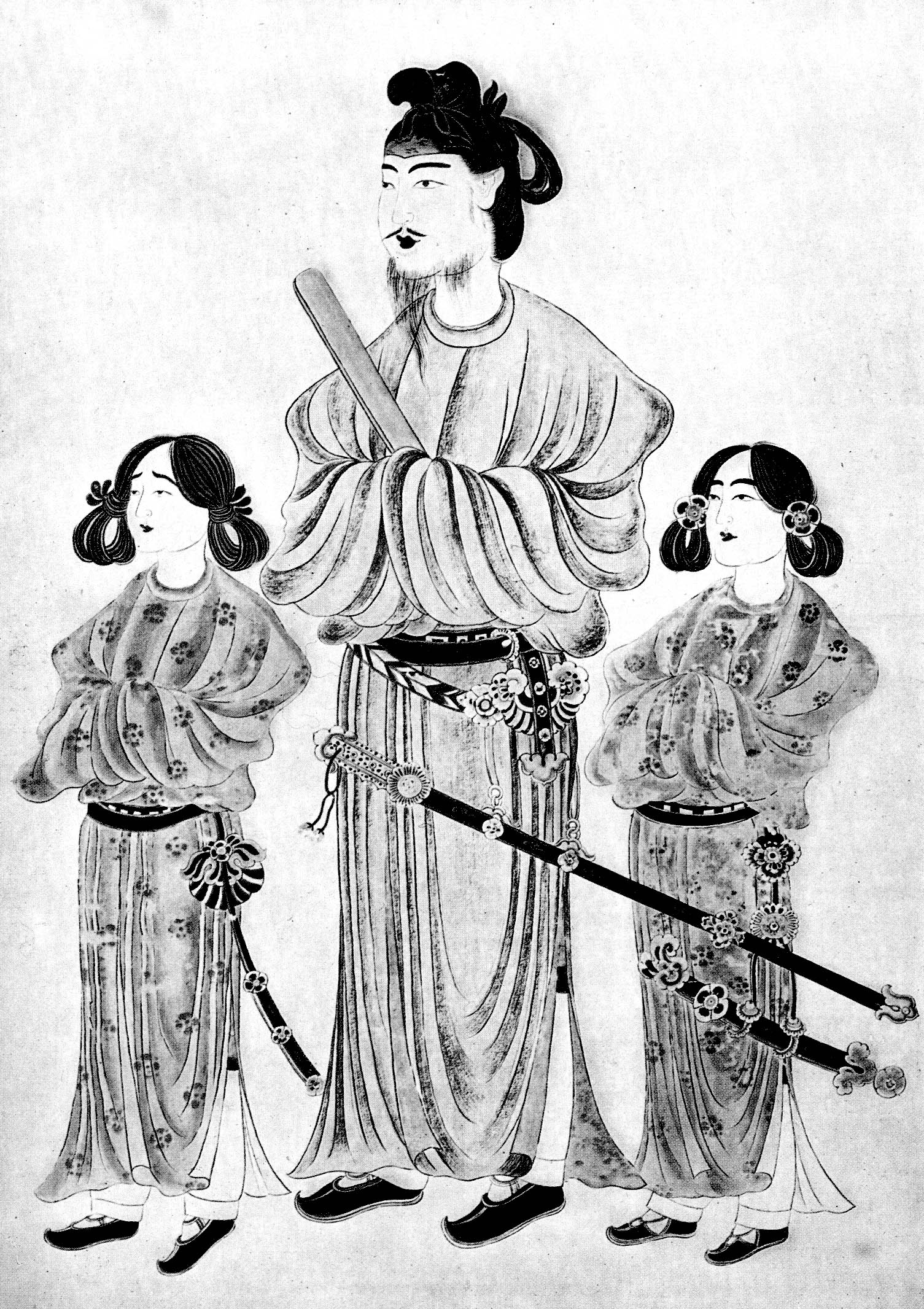
The Japanese culture is heavily infused with the sword, it is one of the three objects of possession required to be Emperor.
Prior to 700 AD swords in Japan were developed from copies of Chinese & Korean designs.
The early swords smiths left no written records of their findings or methods, these secrets were handed down from father to son or master to apprentice, by word of mouth and actual demonstrations.
At this time in Japan, warring clans controlled much of the country, and fighting between them was a common occurrence, usually about land of which only 20% was fit for farming.
The struggle for control of that land gave rise to the SAMURAI.
The clans conducted many military campaigns on the Asian mainland, including China and Korea. They brought back with them culture, technology, and martial arts. The swords were straight (chokuto), single or double edge and usually two handed grips.
When the thrusting action of the sword was replaced by the cutting action, the sword smith had to construct swords whose blades would have uniform cutting efficiency throughout their length. The discovered, through trial and error, that a sword with a razor sharp blade very often broke off when used against armour. On the other hand, an unbreakable blade made of soft steel would bend. The sword also had to be sufficiently light for use in combat.
Ancient pre 800 AD
Koto (old swords) 800 - 1596
Shinto (new swords) 1596 - 1781
Shin - Shinto (new - new swords) 1870 -1876
Gendaito (modern) 1876 to present
In the Ancient period, swords were made of steel by unknown sword smiths (probably Chinese & Korean) without specialist skills, these swords being primitive in design, but practical in battle and were known as tsurugi (straight-bladed sword) or ken (ancient sword).
However, in order to equip the national army, there arose a great demand for a better sword. The ruling clan at this time was the Fujiwara clan.
The Samurai rose out of the continuing battles for land among three main clans:
Minamoto, Fujiwara and the Taira.
They eventually became a class unto themselves between the 9th and 12th centuries, and were called by two names:
Samurai (knight-retainers) and Bushi (warriors)
Some of them were related to the ruling class, while others were hired men. They gave complete loyalty to their Daimyo (feudal landowners) and received land and position in return. Each Daimyo used his Samurai to expand his powers, status and right to more land.

The Samurai became expert in fighting from horseback and on the ground and they practised armed and unarmed combat. They used swords for close in fighting and beheading their enemies and it became an everyday weapon and was carried constantly. The straight sword which was employed prior to this period, principally for stabbing, was replaced by a single
bladed sword with curvature. By tempering steel from iron ore or iron sand, the sword smiths succeeded in fashioning nearly perfect swords with their primitive tools. After forging the blade the sword polisher did his work to prepare the blade for the furniture that surrounded it. Next the sword tester would take the new blade and cut through the bodies of corpses or condemned criminals. They started by cutting through the small bones of the body and moved up to the large bones. These results were often recorded on the Nakago (the tang of the sword blade)
The Samurai wore two swords (daisho). One was long, the other short. The long sword (daito-katana) was more than 24 inches and the short sword (shoto-wakizashi) was between 12 and 24 inches long. These swords were often given
names (Mei) and the Samurai believed it was the "soul" of their warrorship.
In the Shinto period when the Tokugawa family ruled, the sword lost its functional value since the civil wars had been brought to an end. The length of the long sword (daito) was shortened with the cutting edge reduced about two feet. The art of sword making began to decline and the sword smiths started to put extravagant engravings of flowers, shrubbery and dragons instead of simple Sanskrit characters.
More than half of the Samurai swords in existence today were made during the Shinto period.
The feudal system came to an end when Emperor Meiji ascended to the throne and with it the prestige of the Samurai, when he introduced the Meiji Restoration.
In January 1868, the ruling Tokugawa clan shoguns were overthrown by a coalition of the powerful clans in the south-west and the imperial court of Kyoto. The Emperor soon re-established imperial rule in his new capital
Edo renamed Tokyo.
In 1871, the Samurai's right to kill a commoner for insult - real or imaginary was withdrawn.
By January 1877 the wearing of swords by the Samurai was forbidden, and only military and police in uniform were allowed to do so.
No sword with a blade made after 1877 can be called "Samurai" as that warrior class has ceased to exist.
The swords made during this period were designed for official presentations and ceremonial functions. With the outbreak of the Sino-Japanese and Russo-Japanese Wars, swords failed to make a revival as they were mass produced and had little impact against the superior weapons being used at the time.
With the outbreak of the First and Second Word Wars, Japanese officers and NCOs carried
swords that were also mass produced (approx 1 million in WW2). These were machine made but of good quality. After the surrender of the Imperial Army in 1945, the allies insisted that they must hand in their swords, with the senior officers presenting them at official handover ceremonies, while junior officers filed out and laid theirs on the ground.
These swords were collected and destroyed or given to British Commonwealth and US troops that had served in Far East. It is estimated that around 300,000 swords returned to the United States as souvenirs.
In the Ancient period no records were kept for the manufacture of swords, and there are not many surviving swords left as they were not properly tempered. Ancient warriors developed weapons, armour, and a code during the ensuing centuries that became the centrepiece for the Japanese Samurai. Early weapons included bows, arrows and swords. In around the 5th century horses were introduced to Japan and longer swords were developed that could be used on horseback. As the centuries passed and the Japanese army suffered defeat by the Tang's, they closed their borders and demanded they improve their fighting skills. This lead to a martial arts based upon using a sword when fighting on the ground. A shorter sword blade was needed and the Samurai warrior came to being an expert with the sword and without it (jujutsu).
With the change of Shogun, came the fighting skills and the introduction of more modern weapons, this lead to the decline of the sword. Japan still hosts great sword smiths, using traditional designs but modern tools and understanding of metal, this has lead to demand in swords that can cost
up to several thousand pounds with a long waiting list and martial artists of today practise the art of the sword in Iaido and Kenjutsu.

Gordon Warner & Donn F Draeger - Japanese Swordsmanship
John M Yumoto - The Samurai Sword
Stephen Turnbull - The Samurai, A Military History
Michael Finn - Iaido, The Way Of The Sword
I Bottomley & A P Hopson - Arms & Armour Of The Samurai
Richard Fuller & Ron Gregory - Military Swords Of Japan